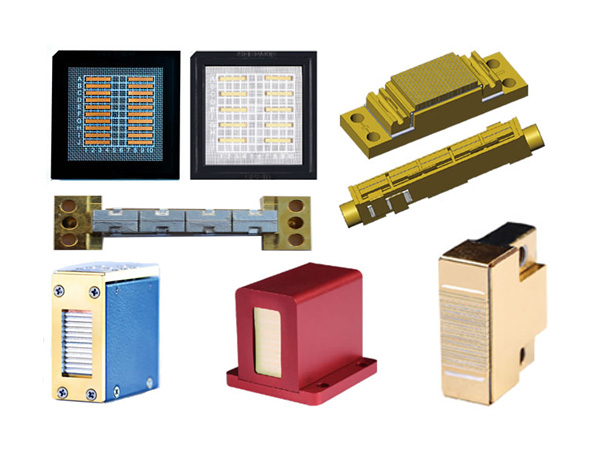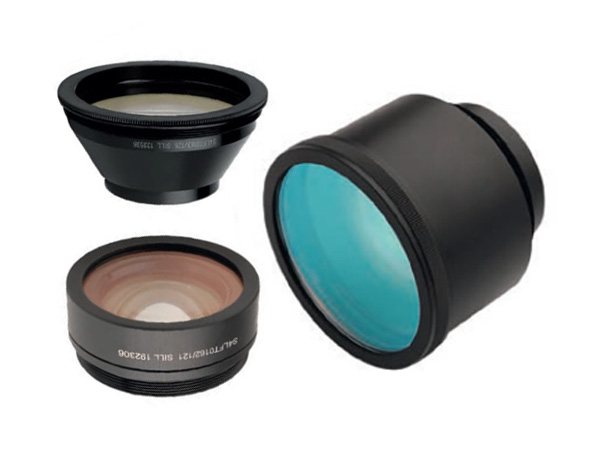An Introduction of Microchip Lasers
An Introduction of Microchip Lasers
A microchip laser is a small solid-state pulse laser pumped by a laser diode, using highly doped crystal materials as the gain media. The cavity length is generally within the millimeter range. Due to the short cavity length, it greatly shortens the photon lifetime in the resonant cavity, making it easier to achieve short pulse width output of the laser. Moreover, the beam quality is good, the laser brightness is high, and single longitudinal mode single frequency laser output can also be achieved. It is precisely because of this characteristic that this type of laser has a very compact structure, long lifespan, and is easy to mass produce.
At present, the definition of microchip lasers is not particularly clear. Generally speaking, microchip lasers are considered as passive Q-switched, sub nanosecond, and high peak power micro solid state lasers. However, this definition usually refers to microchip lasers with gain media such as Nd: YAG and Nd: YVO4, and is not comprehensive. For example, for passive Q-switched micro solid-state lasers made of Er glass, the definition of sub nanoseconds is not very accurate as the pulse width is usually around 5 ns. In addition, with the iterative upgrading of laser manufacturing level, more and more compact and miniaturized actively Q-switched narrow pulse width micro solid state lasers will be introduced, and the definition of microchip lasers will be rewritten. Microchip lasers have high cost-effectiveness and miniaturized structures, and are widely used in fields such as laser ranging, LiDAR, laser processing, laser seed sources, biomedicine, laser induction, Raman spectroscopy detection, mass spectrometry, and scientific research.
The main applications of microchip lasers
Microchip lasers are highly suitable for large-scale industrial applications due to their compact structure, high stability and superior cost-effectiveness.
1. Distance measurement
All types of lasers, including semiconductor lasers, all solid-state lasers, fiber lasers, etc., are widely used in the field of distance measurement. The advantages of microchip lasers in ranging (distance measurement) applications are: small sizes, light weight, wide temperature operating ranges and high peak power. These traits enable microchip lasers to serve as the most critical component of emission systems in extreme usage environments, integrated into very compact equipment, and able to detect relatively long distances. At present, laser rangefinders are developing towards a trend of high safety, long measurement distance, high accuracy, low power consumption and miniaturization. The laser emitted by the previous generation rangefinders is not considered safe to the human eye and can easily damage the retina, which is very unfavorable for use. The application of miniaturized and highly reliable 1535 nm microchip lasers in rangefinders is becoming increasingly widespread, and its universal popularization will be an inevitable trend.
In recent years, the demand for 1535 nm eye-safe lasers based on Er glass has been increasing day by day. Especially because in the military field, an extremely strict temperature range (usually between -40 ℃-60 ℃) is required and very small and very light packages are required, the various quality indicators of Chinese 1535 nm microchip lasers have gradually surpassed those of similar foreign products. Currently, it is known that as for Chinese 1535 nm eye-safe ranging laser products, a laser module with a single pulse energy of 200 μJ, a repetition frequency of 10 Hz and a pulse width of 5 ns can have a weight of less than 10 g and a length of 25 mm. A laser module with a single pulse energy of 300 μJ can have a weight of less than 12g and a length of 35mm. Data shows that the Chinese 1535nm human eye-safe laser easily passed the tests at the extreme temperature of -40 ℃-60 ℃, and its quality indicators are better than similar foreign products. In addition, for 1535 nm eye-safe ranging lasers with high repetition rate requirements above 1 kHz, Chinese lasers can have single pulse energy output above 40 μJ. The miniaturized human eye-safe laser rangefinder mainly consists of four parts: laser emission module, optical transceiver system, laser receiving system, and signal processing system. The human eye safety ranging system uses an Er glass solid laser to generate a 1535nm laser with hundreds μJ energy, low repetition rates, and narrow pulse widths. The system uses InGaAs APD as signal detection and TDC for flight time measurement, thereby obtaining accurate distance information.
2. 3D LiDAR
3D LiDAR is different from single point LiDAR. In addition to detecting the presence and distance of the target, it also needs to use a scanning system or array imaging system to solve the problem of what the target is. Laser imaging radar has a wide range of application markets in geological and agricultural and forestry feature capture, military target recognition and tracking, architectural design and planning, resource exploration, security search and rescue and many other fields. At present, active Q-switched narrow pulse width lasers and passive Q-switched sub nanosecond laser components and systems are very suitable for 3D LiDAR.
3. Micromachining
Unlike high-power fiber lasers and all solid-state lasers, microchip lasers are more suitable for the field of micromachining of hard and brittle materials. At present, micromachining systems are developing towards smaller size, lighter weight, and more precise machining performance. The traditional laser used for processing hard and brittle materials is a nanosecond laser, with a pulse width generally above 5 ns, a large size, high environmental requirements, poor stability, and significant thermal effects. The processing effect on many materials is not ideal. Although picosecond and femtosecond lasers have good micromachining performance, they are expensive and bulky. High power, high repetition rate sub-nanosecond lasers are a type of quasi-ultrafast laser with high cost-effectiveness, which combines the processing accuracy of picosecond lasers with the price advantage of ordinary nanosecond lasers. They have broad application prospects in the field of precision micromachining and are highly favoured by industrial customers.
 English
English Français
Français Deutsch
Deutsch euskara
euskara Русский язык
Русский язык Italiano
Italiano Português
Português Nederlands
Nederlands Polski
Polski Greek
Greek Lietuva
Lietuva Türkçe
Türkçe 日本語
日本語 한어
한어 中文
中文 தாமில்
தாமில் فارسی
فارسی हिंदी
हिंदी Tiếng Việt
Tiếng Việt ภาษาไทย
ภาษาไทย Pilipino
Pilipino Indonesia
Indonesia தாமில்
தாமில்





